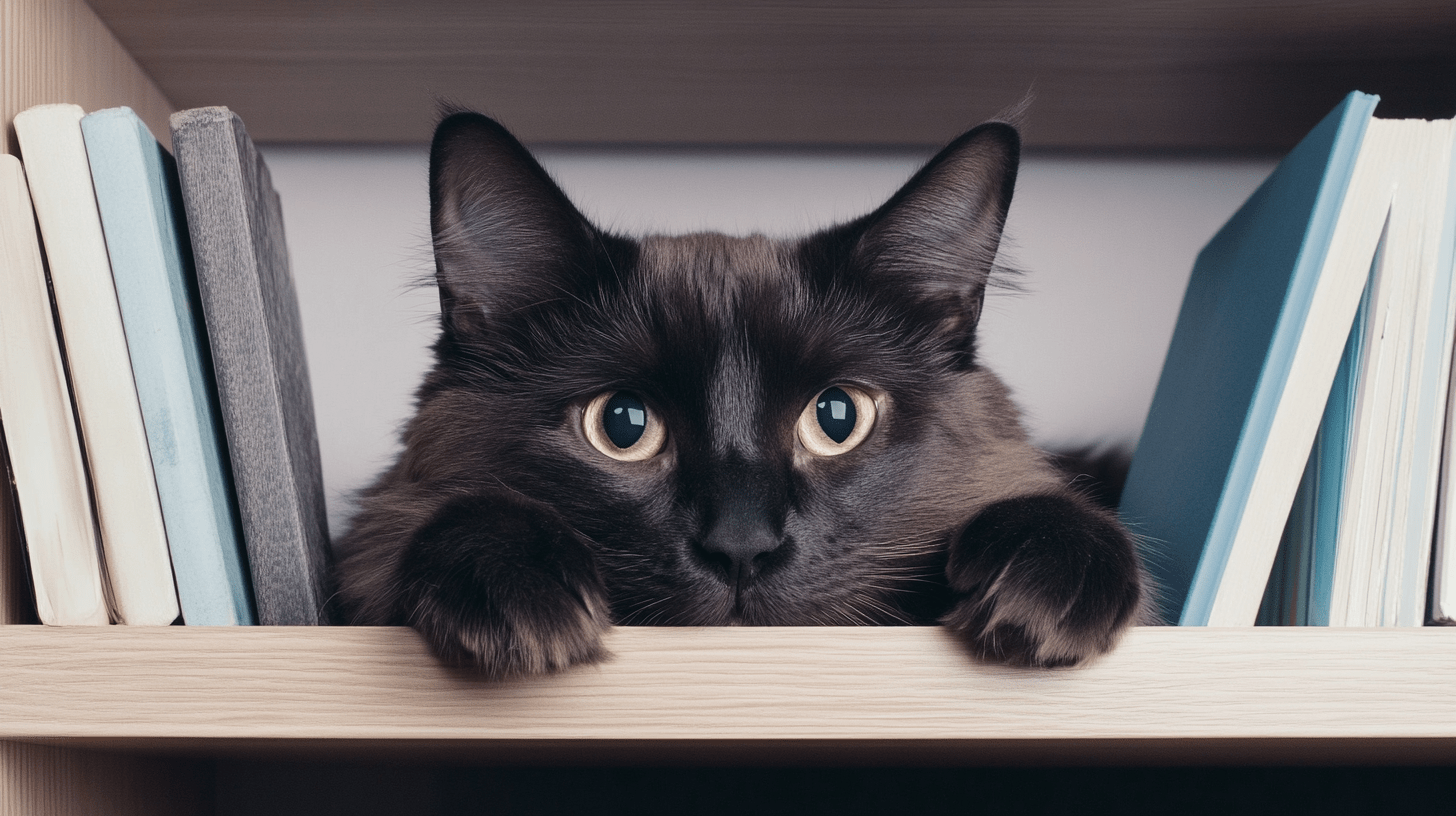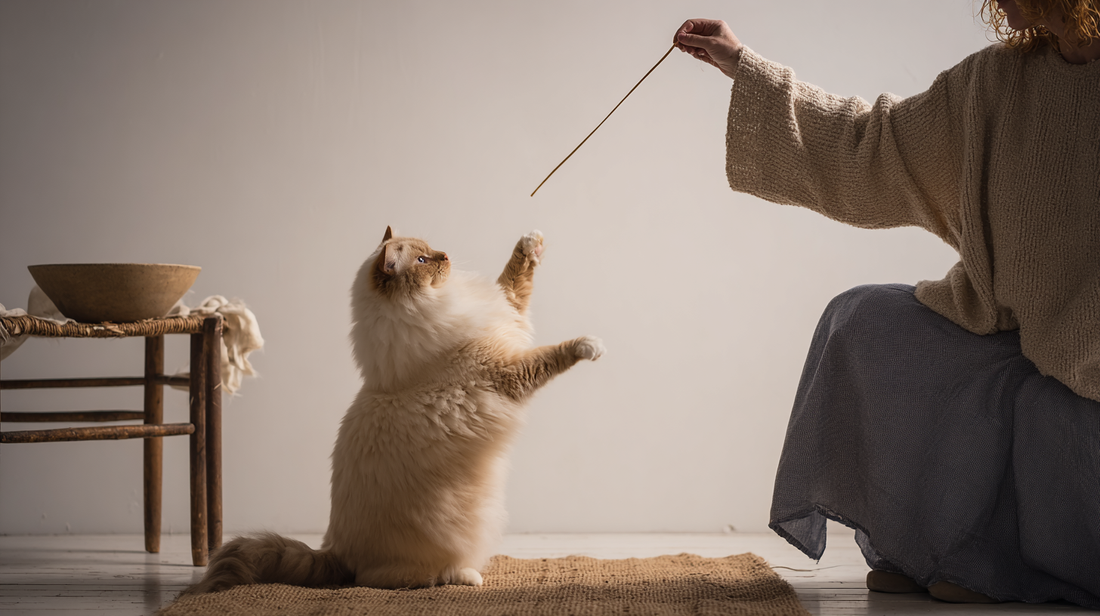Many cat owners notice when their feline friends start acting differently—hiding more, grooming excessively, or showing changes in eating habits. These behavioral shifts often signal that your cat is experiencing stress and anxiety, which can significantly impact their well-being.
Recognizing and addressing these issues is crucial for ensuring a happy, healthy life for your beloved companion. This guide aims to provide you with a comprehensive understanding of stress and anxiety in cats, offering actionable steps you can take to help your feline friend live a more peaceful life.
Summary
The science behind feline stress and anxiety
Changes in your cat's daily routine and environment can be significant stressors. To effectively address these issues, it's important to understand the nuances between stress, fear, and anxiety. Fear is an emotional reaction to a present, tangible threat, such as a loud noise or an unfamiliar animal. Anxiety relates to the anticipation of a potential threat—a feeling of unease or worry about something that might happen in the future. It's worth noting that there is no empirical data distinguishing expressions of anxiety from fear in cats.
Stress is a broader term that refers to your cat's body's response to any stimulus or event, often called a "stressor," that poses a potential threat. This response involves a complex interplay of physiological and behavioral changes, including the activation of the sympathetic adrenal medullary axis and the hypothalamic-pituitary-adrenal cortex axis. Stress can manifest in various ways, affecting your cat's behavior, physiology, and overall health.
Identifying what triggers your cat's stress
Vet visits: a major source of feline anxiety
Potential stressors in a veterinary setting include:
Exposure to other animals and unfamiliar people.
Unfamiliar smells, such as disinfectants and alarm pheromones from other animals.
Aversive noises, such as barking dogs, clippers, and alarms.
Smooth or slippery surfaces, such as floor coverings or metal examination tables.
A high proportion of cats exhibit fear during veterinary visits, making these trips a major stressor for both your pet and you as their owner. Studies indicate that many cat owners would consult veterinarians more often if the visits were less stressful for their beloved pets.

Health consequences of veterinary stress
The negative impacts of stress in a veterinary setting are far-reaching:
Distorted physiological easurements: stress can alter your cat's vital signs, making it difficult for veterinarians to obtain accurate readings.
Reduced effectiveness of sedation: stressed cats may require higher doses of sedation, increasing the risk of complications.
Increased anesthetic Risks: stress can elevate the risk of complications during anesthesia.
Elevations in blood pressure and changes in cortisol levels: for your cat, transport to the veterinary practice and routine visits can cause physiological changes, such as elevations in blood pressure and changes in cortisol levels.
Everyday stressors in your home environment
Stressors aren't limited to veterinary visits; they can also arise within your cat's home environment.
Common stressors at home include:
Changes in daily routines, such as feeding times or your work schedule.
Household relocation, which disrupts your cat's established territory.
Renovation work, introducing unfamiliar noises and smells into your home.
The addition of new family members, including children or pets.
Spotting the warning signs of a stressed cat
Early recognition of stress signs is crucial for timely intervention. Your cat often displays subtle behavioral changes that you might not notice without knowing what to look for.
Behavioral changes to watch for
Common behavioral signs of stress in your cat include:
Shifting body weight or crouching.
Increased muscle tension.
Changes in activity level, such as increased hiding or restlessness.
Gaze avoidance, where your cat avoids direct eye contact.
Reduced playfulness.
Changes in vocalization and posture.
House-soiling, which involves urinating or defecating outside the litter box.
Overgrooming, leading to bald patches or skin irritation.
However, as a cat owner, you might overlook key stress signs, attributing them to normal cat behavior. This happens in part because your perceptions may depend on preconceptions about what constitutes normal feline behavior. Education is key to helping you recognize these subtle cues and take appropriate action for your cat's well-being.

Practical solutions for reducing your cat's anxiety
Creating a low-stress environment involves several key considerations, starting with the waiting area of a veterinary clinic. The waiting area should be set up to maximize distance between animals and include barriers to reduce visual contact. Using sound-absorbing materials like tiles, rubberized floors, or wall panels can help to minimize aversive sounds that might upset your cat.
Gentle handling techniques that make a difference
Low-stress handling techniques are essential for minimizing anxiety during interactions with your cat.
Use smooth, slow movements and calm speech when approaching or handling your cat.
Avoid repeated touching; instead, slide your hands along your cat's body.
Allow periodic brief pauses during examinations and enable some play or pleasant activity to lower arousal and promote more positive emotions in your cat.
Veterinary personnel should be trained in desensitization and counterconditioning techniques to better serve you and your cat.
Building positive experiences for future visits
Happy visits to the clinic can help create more positive associations for your cat. Consider bringing your pet to the clinic simply for greetings and treats, incorporating positive experiences into training plans.
Your role as the owner is critical in managing your cat's stress. Try to convey positive emotions and confidence, bringing familiar items like your cat's favored food, chews, toys, and blankets to provide comfort during potentially stressful situations.
Creating an effective stress management plan
A well-considered treatment plan is essential for managing your cat's stress during veterinary visits. This plan should consider behavioral evaluations and planned procedures, ranking interventions by invasiveness and considering interrupting procedures if your cat's distress becomes severe.

When to consider medication and supplements
Medication and supplements can play a crucial role in managing severe stress and anxiety in your cat.
Consider medication when there is a risk of traumatizing your pet or for safety reasons, or when stress-reducing measures are insufficient. Pre-visit anxiolytic medication can be particularly helpful for cats with known anxiety issues.
Pre-visit discussions with your veterinarian about medication options are essential to ensure appropriate selection and administration for your cat's specific needs.
Effective pharmacological options for feline anxiety
Specific medications and supplements that may be recommended for your cat include:
Gabapentin: this anticonvulsant with anxiolytic effects can be administered with tuna juice or wet food. Be aware that your cat may have a risk of falling from elevated areas after administration.
Alpha-s1 casozepin: this dietary supplement may improve your cat's coping with stressful events and influence the autonomic nervous system.
Pheromones: a review of studies concluded that the evidence is insufficient to demonstrate the effectiveness of pheromone products in reducing distress in dogs and cats.
Training techniques to build your cat's confidence
Desensitization and counterconditioning are powerful techniques for modifying your cat's response to stressful stimuli. Desensitization involves gradually exposing your cat to the stimulus at a low intensity, while counterconditioning pairs the stimulus with something positive, such as food or praise.
Break down the examination into small, manageable steps for your cat.
Reward each step with food or praise to build positive associations.
Repeat steps until your cat relaxes and becomes comfortable.
If tension increases, use even smaller steps or consider medication for your cat's comfort.
Training kittens to accept body touching from a young age can prevent the development of anxiety later in your cat's life.

The role of professional veterinary support
Veterinary personnel should be thoroughly trained in:
Recognizing signs of stress in your cat.
Low-stress handling techniques appropriate for felines.
Desensitization and counterconditioning methods.
Accommodating "difficult" animals may initially require more time, but investing in individual routines and enabling your cat to feel safe leads to more efficient examinations and treatment in the long term.
The comfort of familiarity: how your presence helps
Your presence can significantly influence your cat's stress levels. The secure base effect describes the phenomenon where the presence of a trusted caregiver (you) provides a sense of security and reduces anxiety in stressful situations for your cat.
A study tested whether owner scent reduces cat anxiety. The research revealed that cats displayed fewer stress-related behaviors when their owner was present. Interestingly, a scent object alone did not have the same calming effect on the cats.
Creating a stress-free life for your feline companion
Managing stress and anxiety signals in your cat requires a multifaceted approach that considers your pet's environment, handling techniques, and individual needs. Stressful interactions should be avoided whenever possible, and pleasant emotions can be promoted through positive reinforcement and environmental enrichment.
When management and low-stress handling methods are not sufficient to moderate your cat's fear, anxiolytic medication is indicated alongside a behavioral treatment plan. Prioritizing a good relationship between the veterinary team, you as the owner, and your pet leads to better lifelong healthcare for your cat and benefits everyone involved.
The information in this article is based on the following scientific publications:
Behnke, A.C. (2021). The effect of owner presence and scent on stress resilience in cats. Applied Animal Behaviour Science, 243, 105444.
Makawey, A., et al. (2020). Cats at the Vet: The Effect of Alpha-s1 Casozepin. Animals, 10(11), 2047.
Mariti, C., Guerrini, F., Vallini, V., Bowen, J., Fatjò, J., Diverio, S., Sighieri, C., & Gazzano, A. (2017). The perception of cat stress by Italian owners. Journal of Veterinary Behavior.
Riemer, S., et al. (2021). A Review on Mitigating Fear and Aggression in Dogs and Cats. Animals, 11(1), 158.
Yamada, R., Kuze-Arata, S., Kiyokawa, Y., & Takeuchi, Y. (2020). Prevalence of 17 feline behavioral problems and relevant factors of each behavior in Japan. Journal of Veterinary Medical Science, 82(3), 272–278.
Looking for a solution? Start here
Stylla Calmness for cats
Supports relaxation and emotional balance with amino acid-based formulation
- Promotes emotional balance and relaxation
- Helps maintain balanced behaviour
- Supports healthy physiological equilibrium
Made in Switzerland with strict quality standards





